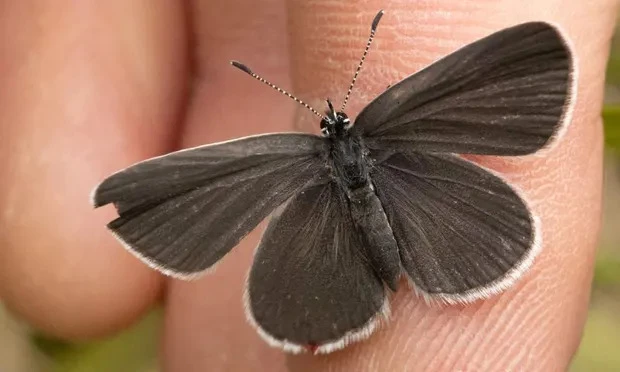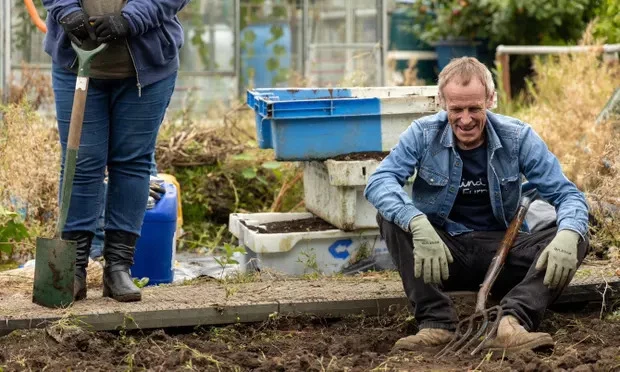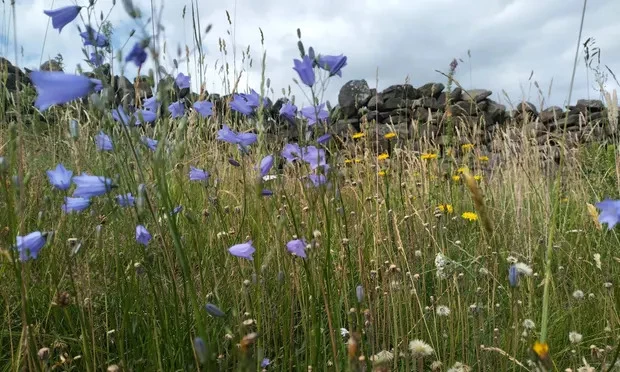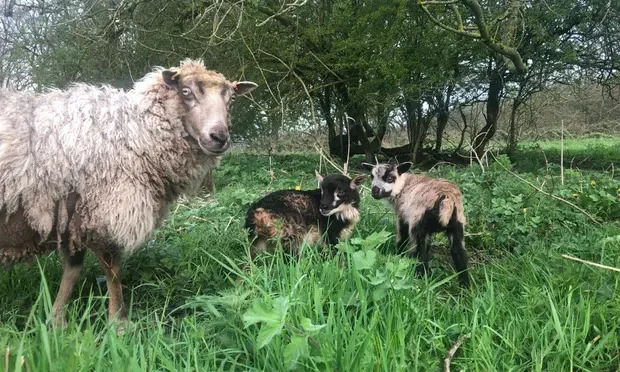Amidst the threat of local extinction, Britain's biodiversity finds hope in grassroots initiatives. Explore the heartening stories of wildlife restoration, from the release of dormice in the Lake District to the transformative Woven Earth project in Derbyshire.
These stories of conservation and community engagement illuminate the path toward ecological revival, showcasing the resilience of nature and the collective power to protect our planet.
The Causes Of An Alarming Biodiversity Crisis In Britain
 Source: The Guardian
Source: The Guardian
The superficial beauty of rolling hilltops often conceals a harsh reality—shortsighted agricultural practices, habitat destruction, and factory farming have pushed one in six species to the brink of local extinction. They are among the causes of an alarming biodiversity crisis in Britain.
However, amidst this environmental challenge, pockets of hope are emerging along the edges. Local wildlife restoration projects, such as "Back on Our Map," quietly have a positive impact.
Operating in and around the Lake District, this initiative focuses on restoring habitats across protected areas, effectively reintroducing endangered species like the hazel dormouse.
A notable achievement was the release of 69 dormice in June 2021, and subsequent surveys have revealed the heartening discovery of over 100 juvenile dormice.
Besides, it has restored habitats across protected areas from Morecambe Bay to Grizedale Forest, reintroducing species such as the seriously endangered hazel dormouse.
The Project In Derbyshire, An Inspiring Story Of Ecological Revival
 Source: The Guardian
Source: The Guardian
The project in Derbyshire is truly an inspiring tale of ecological revival.
Not only did it involve the relocation of 64 small blue butterflies to enhance their geographic range, but it also engaged the younger generation in a heartwarming way. Each butterfly found its freedom in the hands of local primary school children, fostering a connection with nature.
Moreover, the project aimed at diversifying the usual conservation contributors, welcoming volunteers from unexpected places like Haverigg Open Prison, Mind in Furness, and special needs college students.
This inclusive approach not only enriched the environment with the planting of 4,000 aspen trees but also provided valuable skills to the volunteers, some of whom plan to continue conservation efforts post-release.
 Source: The Guardian
Source: The Guardian
In the center of Derbyshire, the once overgrazed knolls have transformed into a blooming meadow, a result of allowing sheep to mimic wild grazing.
This simple act has triggered a flourishing ecosystem, attracting diverse wildlife from spotted flycatchers to swallows and even leading to more frequent sightings of weasels, badgers, and deer.
The project's success demonstrates the profound impact of community engagement and mindful conservation practices.
High Leas Farm In Derbyshire And “Social Farm Project” Term
 Source: The Guardian
Source: The Guardian
The story of High Leas Farm in Derbyshire is like a nature fairytale coming to life. This 160-acre site had been quietly farmed in a "low input" manner for over a decade.
Then, the farm owners joined forces with a team of ecologists to launch the Woven Earth project, marking the beginning of a magical journey in "holistic restoration."
Rob Owen, part of Woven Earth, shared their unique approach, emphasizing humans as key players in this wild tale. The idea was to let nature take the lead, allowing the land to grow and restore itself.
 Source: The Guardian
Source: The Guardian
They even coined the term "social farm project," where adults with mental health issues are invited to workshops to reconnect with nature and participate in the wild. It's a beautiful initiative, recognizing humans as an essential part of the natural world.
Meanwhile, in East Anglia, WildEast beckons homeowners and landowners to let a little piece of land go wild, with over 2,000 pledges covering 8,500 acres. This movement aims to create a model where nature thrives everywhere, turning every backyard into a haven for wildlife.
The Felixstowe Community Nature Reserve
 Source: The Guardian
Source: The Guardian
Felixstowe is buzzing with nature as the community embraces the Felixstowe Community Nature Reserve campaign. Picture this: an area the size of two tennis courts transformed into a sprawling network across local backyards, window boxes, and balconies.
The Felixstowe Community Nature Reserve encourages each member to dedicate at least three square yards to pollinator-friendly plants, hedgehog homes, and other wildlife havens.
The magic lies in letting parts of gardens grow wild and letting nature weave its micro-ecosystems. Meanwhile, in Truro, Cornwall, a team of countryside rangers has been working for five years to boost wildlife on council-owned land.
Thanks to new tree plantings, the wasp spider now thrives, and vibrant orange fritillary butterflies flutter in the air. The community joins forces for bioblitzes, litter picks, and bat tours, watching their local oasis evolve with the changing seasons.